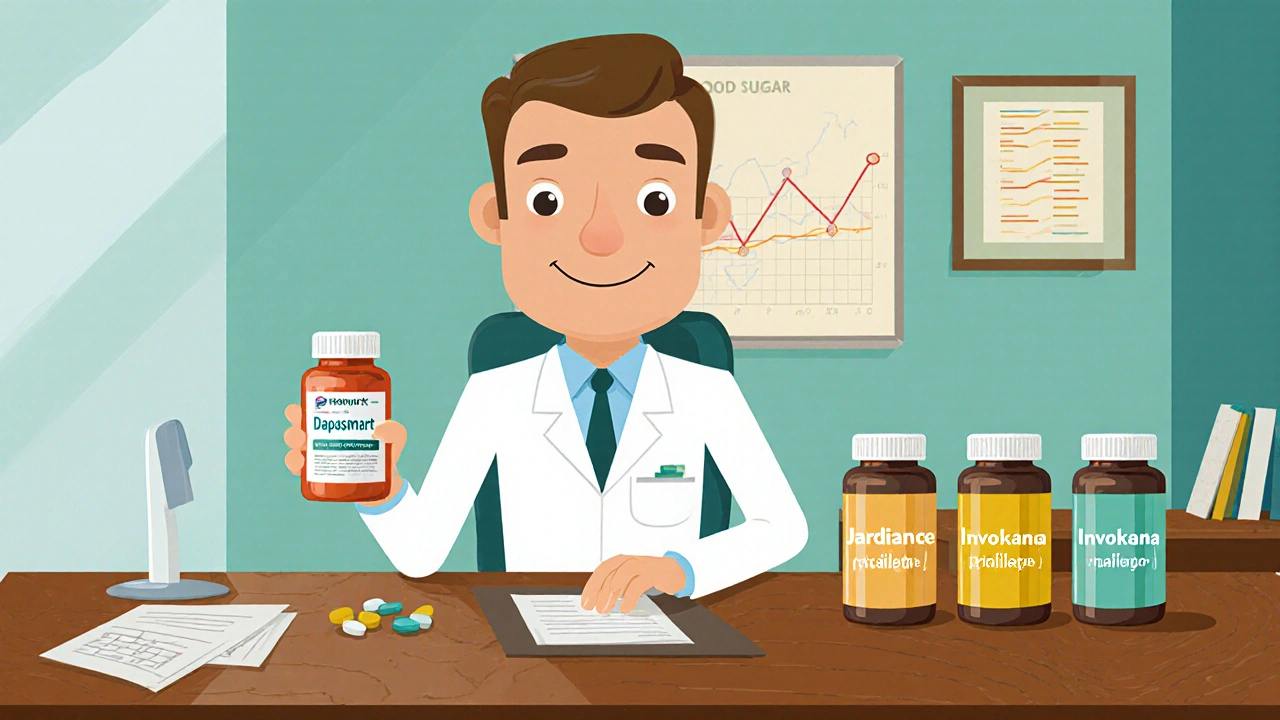When talking about SGLT2 inhibitors, a class of oral glucose‑lowering drugs that block the sodium‑glucose co‑transporter‑2 in the kidneys, causing excess glucose to be expelled in urine. Also known as Sodium‑glucose co‑transporter‑2 inhibitors, they not only trim blood sugar but also lower cardiovascular events, help the kidneys, and often lead to modest weight loss. Because they act at the kidney level, SGLT2 inhibitors require a check of kidney function before starting and during therapy. In practice, they reduce blood glucose, cut heart risk, and need regular monitoring – a triple that shapes every treatment decision.
Understanding any diabetes drug means first looking at the disease it treats. type 2 diabetes, a chronic condition where the body either resists insulin or doesn’t produce enough, leading to high blood sugar levels. Managing it often involves a toolbox of drug classes, each with its own strengths. For instance, GLP‑1 receptor agonists, injectable agents that mimic the gut hormone GLP‑1 to boost insulin release, slow stomach emptying, and curb appetite, excel at weight loss and have strong heart‑protective data, but they require injections and can cause nausea. On the other side, DPP‑4 inhibitors, oral meds that block the enzyme DPP‑4, prolonging the action of natural GLP‑1, are easy to take and cause few side effects, yet they offer modest glucose lowering and little impact on weight. When you line these up with SGLT2 inhibitors, you see clear trade‑offs: SGLT2 inhibitors sit in the middle, offering oral dosing, solid glucose control, weight loss, and proven heart and kidney benefits, while bringing risks like urinary tract infections and rare ketoacidosis.
Choosing the right agent comes down to a few practical lenses. First, look at efficacy – empagliflozin, dapagliflozin, and canagliflozin each lower HbA1c by about 0.5‑0.9%, comparable to many GLP‑1 drugs but stronger than most DPP‑4 inhibitors. Second, weigh side‑effect profiles: the biggest concerns for SGLT2 inhibitors are genital yeast infections, dehydration, and ketoacidosis, especially in people with low kidney function. Third, consider cardiovascular and renal outcomes – large trials (EMPA‑REG, CANVAS, DECLARE‑TIMI) showed clear reductions in heart failure hospitalizations and slowed kidney disease progression, benefits that DPP‑4 inhibitors lack and GLP‑1 agonists only match in some studies. Fourth, factor in cost and insurance coverage; generic versions are emerging, but brand‑name prices can still outpace DPP‑4 pills. Finally, think about patient preferences: oral tablets vs. injections, dosing frequency, and lifestyle impacts. By lining up these attributes, you can see exactly where each SGLT2 drug sits relative to other options and make a choice that fits a person’s health goals and risk tolerance. Below, you’ll find a curated set of articles that dive deeper into each comparison point, from detailed side‑effect tables to real‑world cost analyses, giving you the tools to pick the best fit for your situation.

A detailed side‑by‑side comparison of Dapasmart (dapagliflozin) with other diabetes drugs, covering efficacy, safety, cost and patient‑specific recommendations.
More